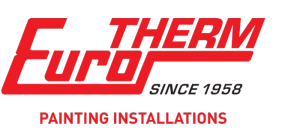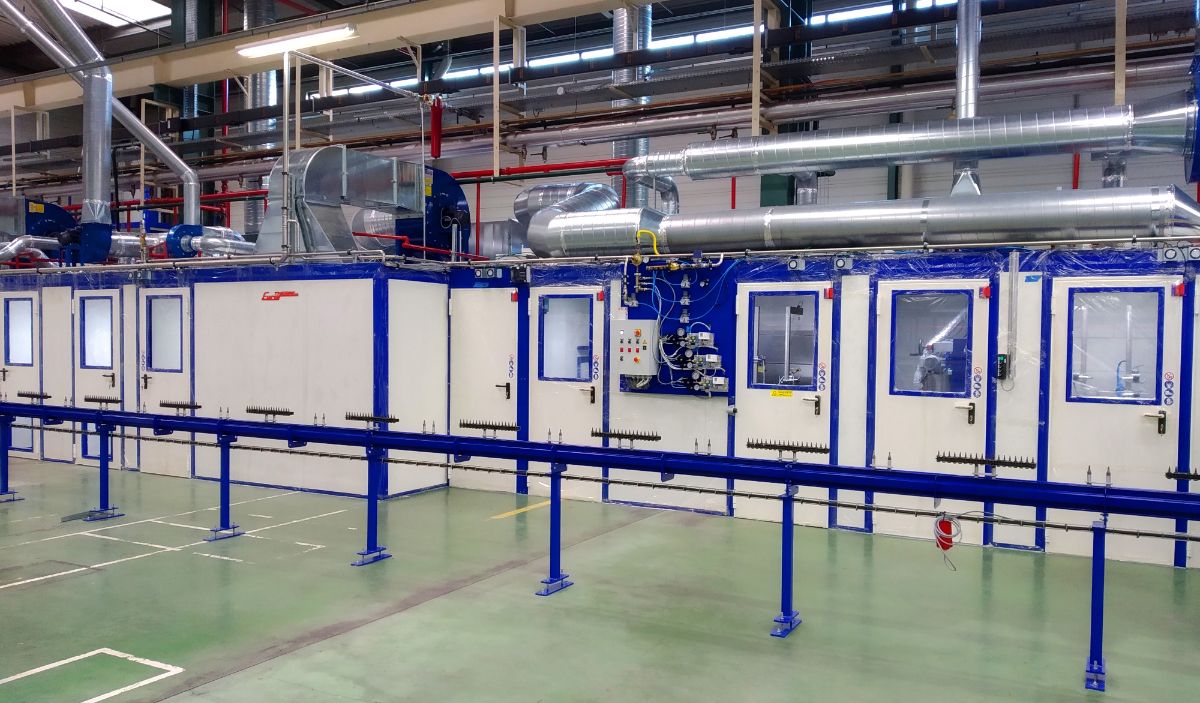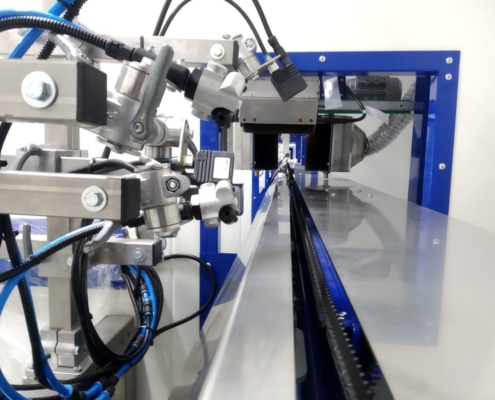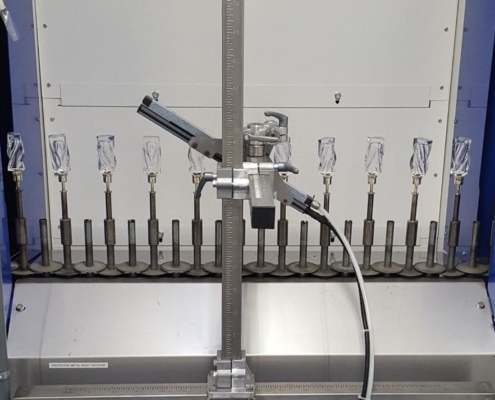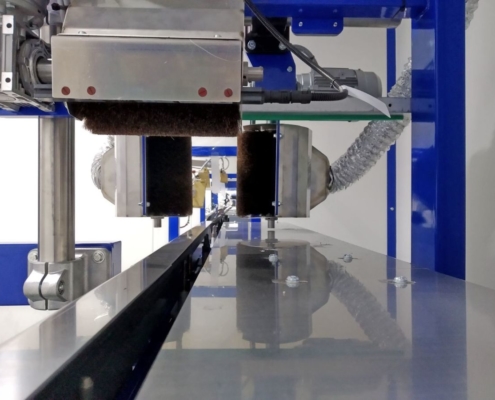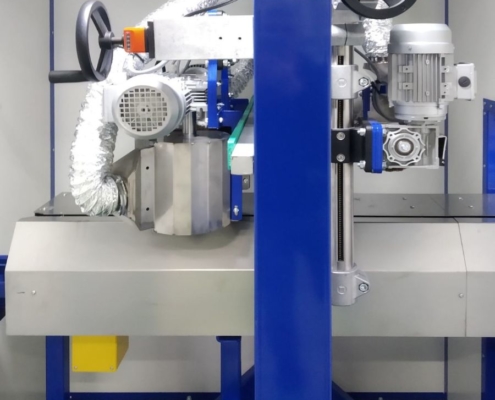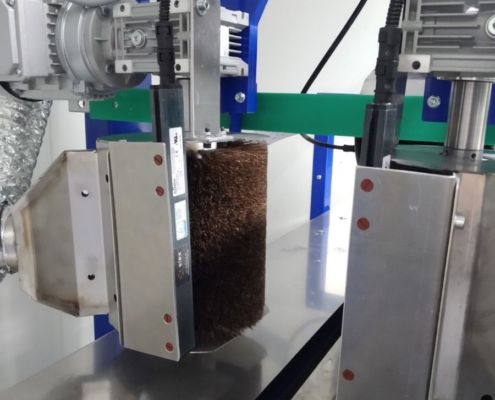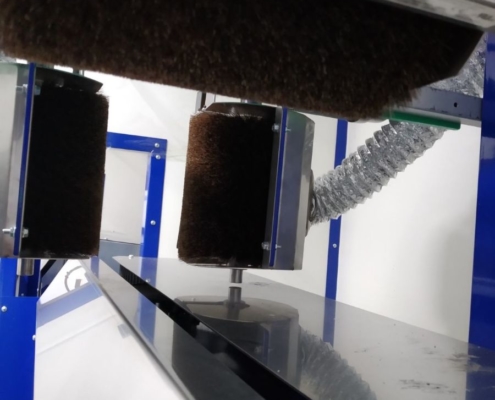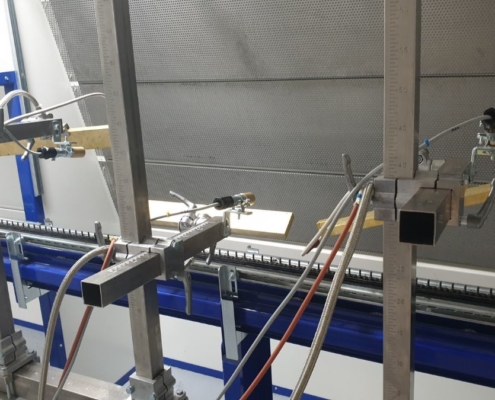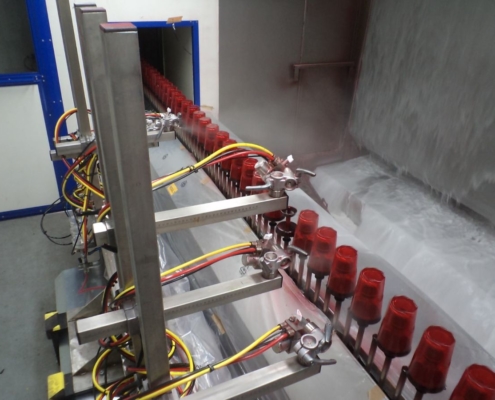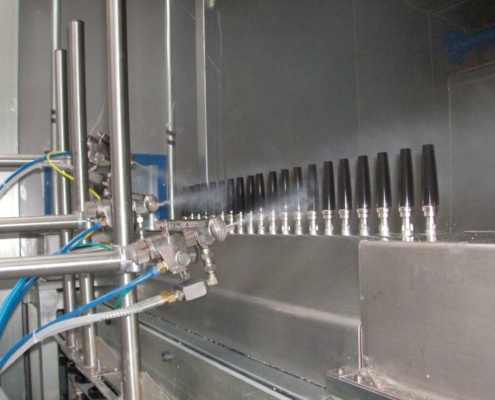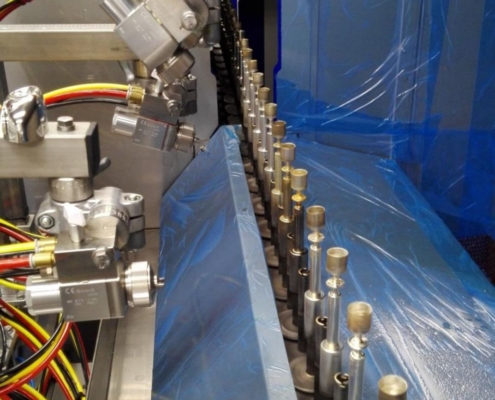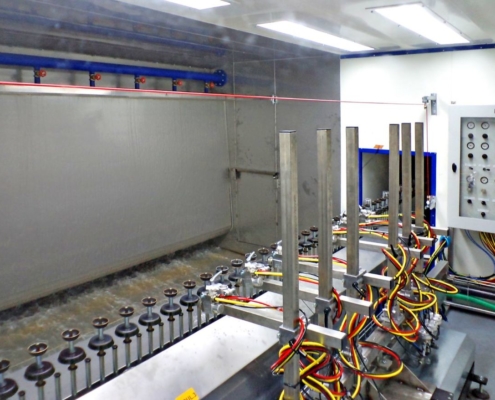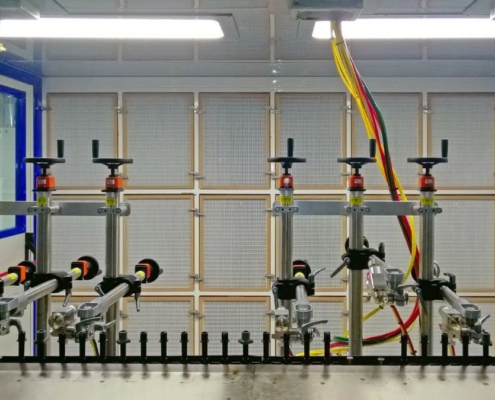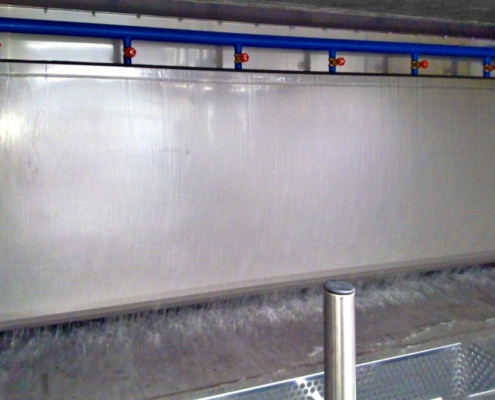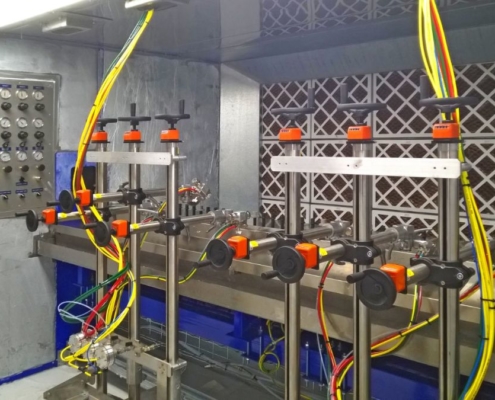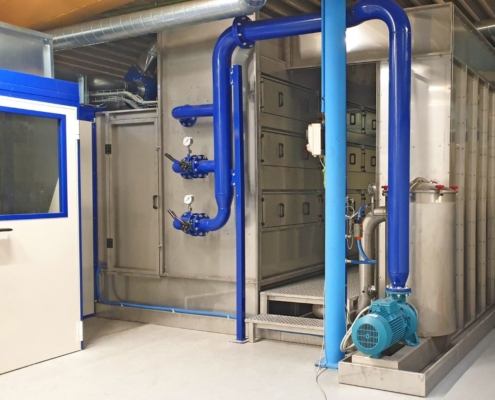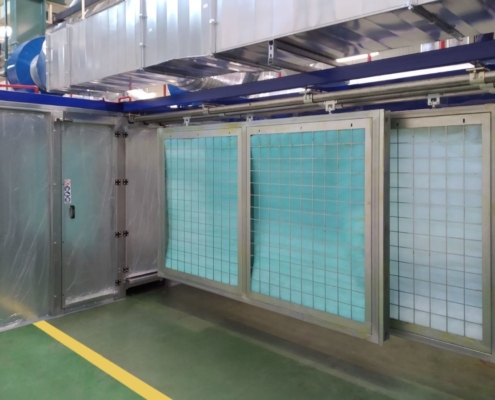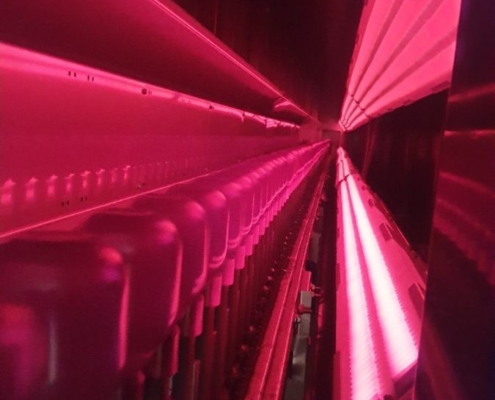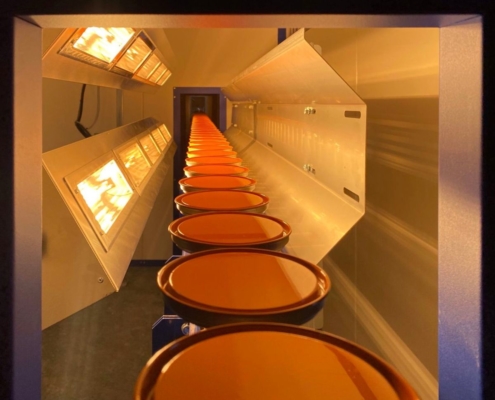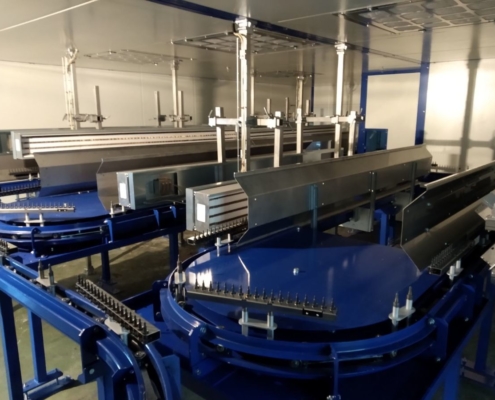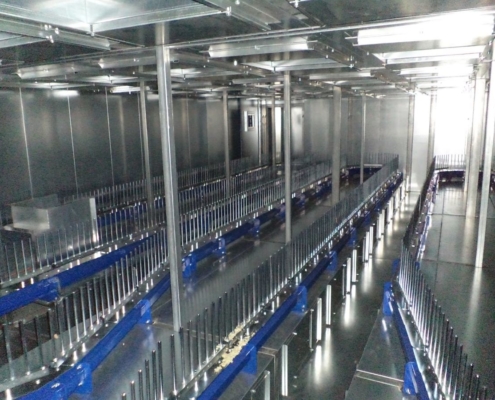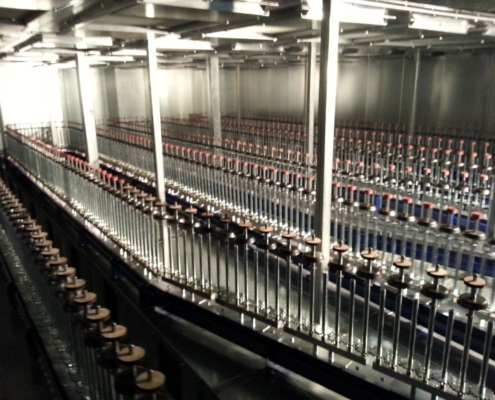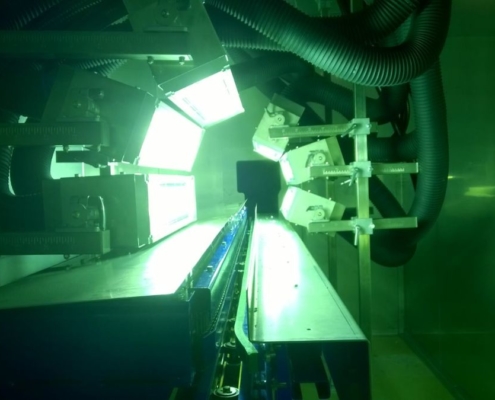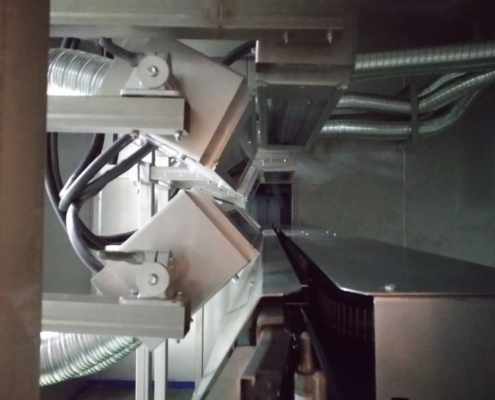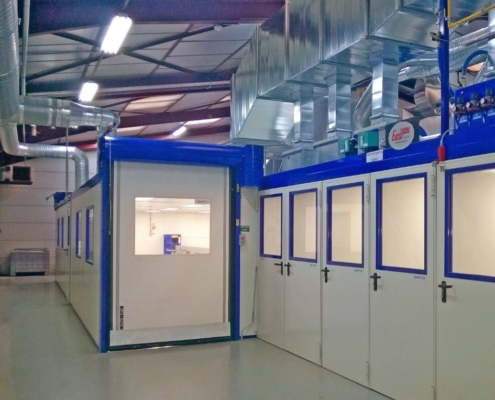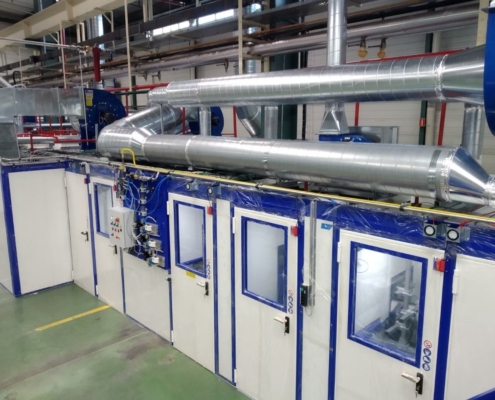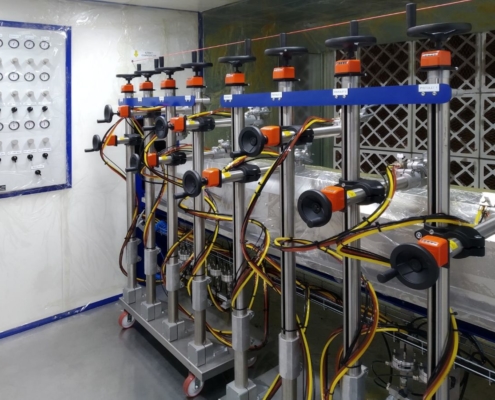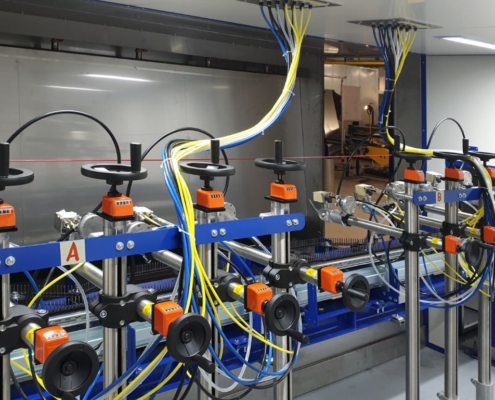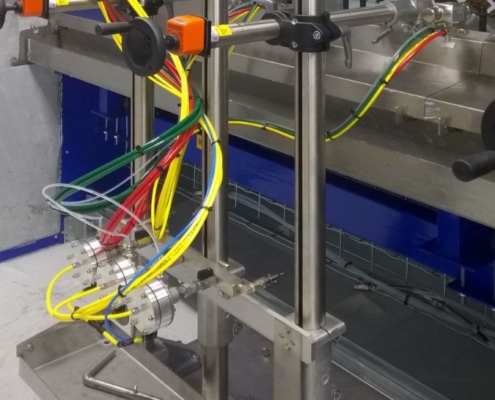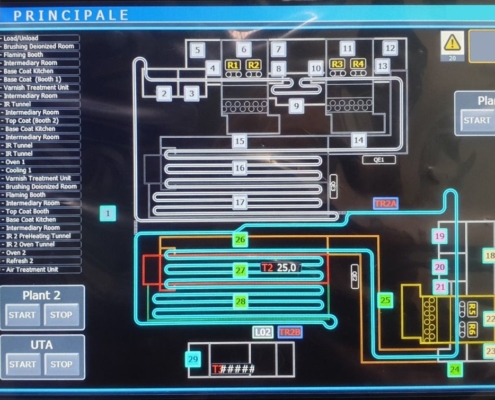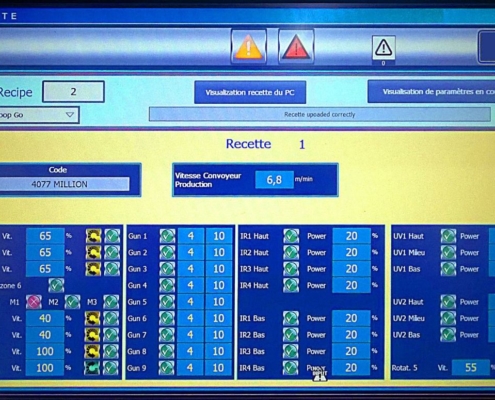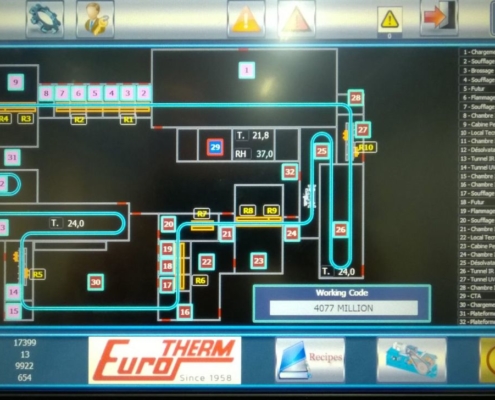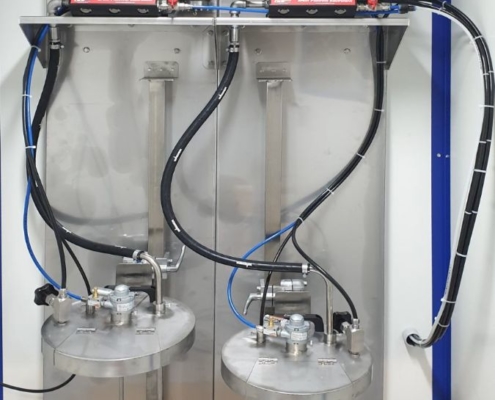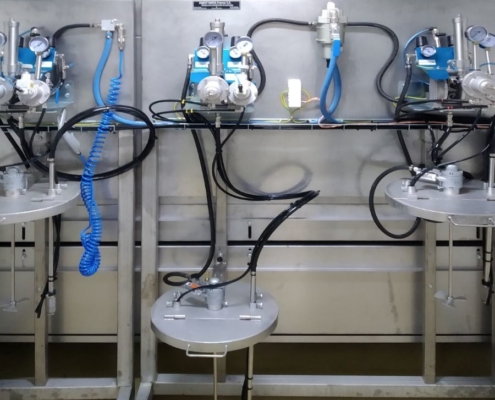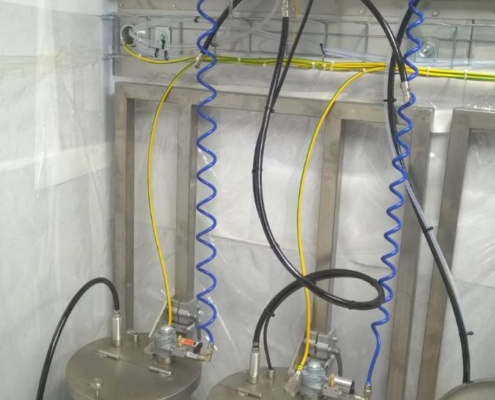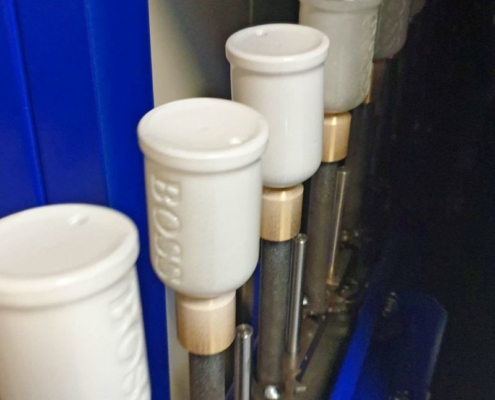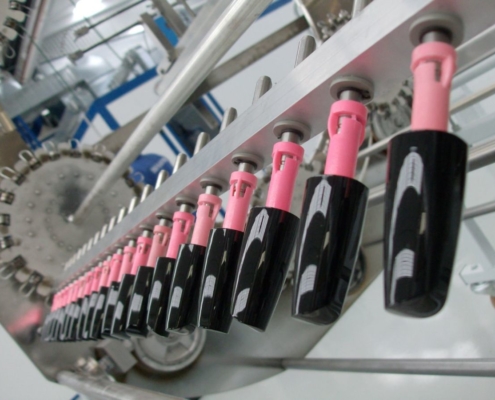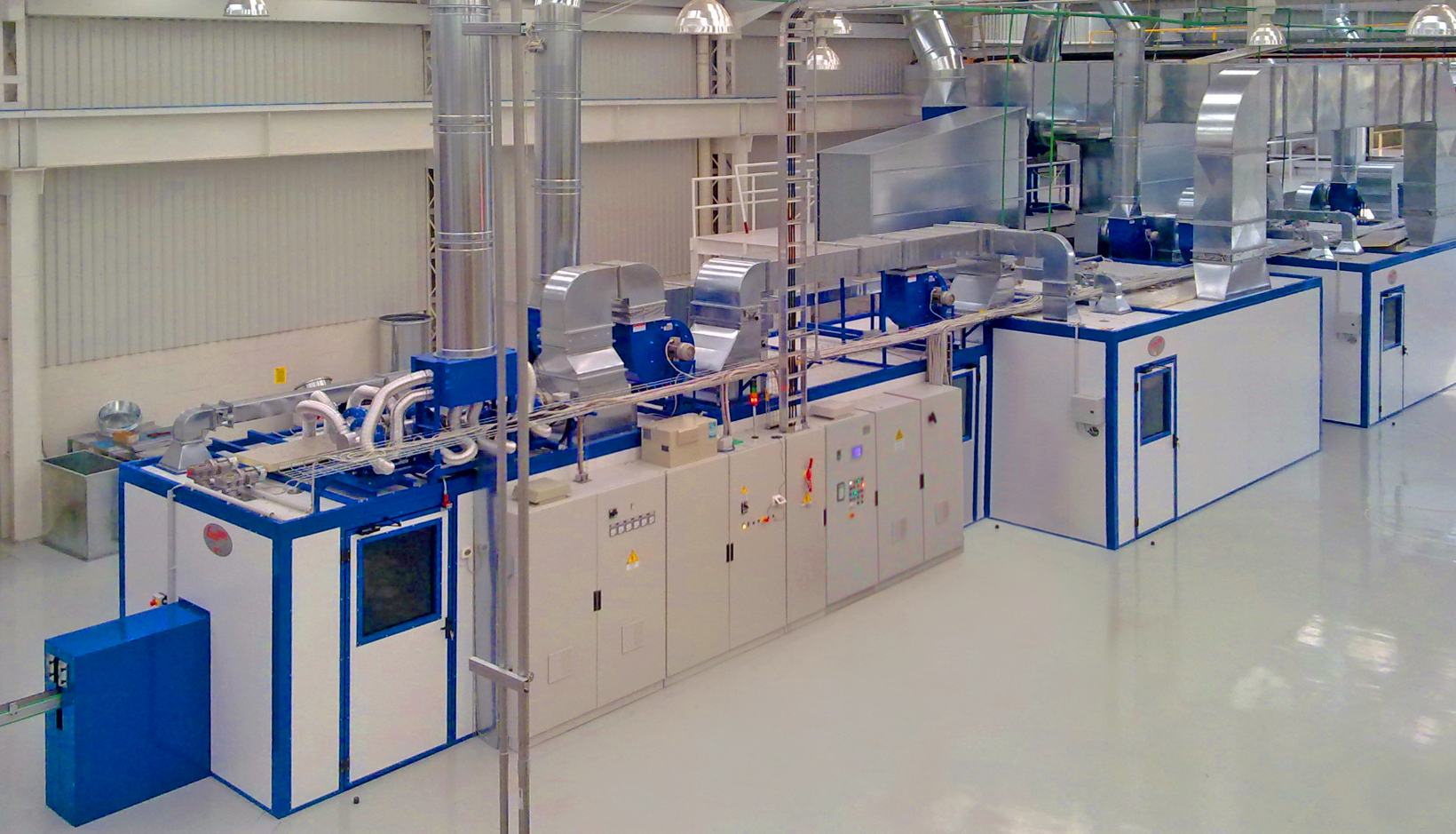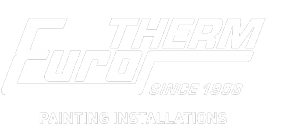Over the years, Eurotherm has stood out in the production of rotational painting systems for painting plastic and glass components for the cosmetic and table art industries, as well as wooden artefacts and small metal components.
Painting certain high-quality objects such as table art components (e.g. plates, glasses, pepper mills) or those in the cosmetics industry (e.g. mascara tubes, perfume caps, perfume packaging, lipsticks and powders) is an essential step in the aesthetic finishing of the products.
This type of system is particularly suitable for coating small plastic, glass, metal or wooden components at very high production rates.
The components to be treated, once loaded onto the automatic conveyor of the ‘inverted’ type, are put into rotation in the key processing areas.
These are always complete liquid coating treatment lines that are completely customised in terms of the work cycle’s sequence to be carried out, the size of the individual treatment rooms, the length and conformation of the course, but also the speed of the line.
In fact, the latter, being of very high productivity, has an average of 600,000 pieces per week, with a very high focus on the aesthetic result.
What does a rotational coating system consist of?
A rotational painting line for cosmetics is composed differently from the traditional system, due to the particularities of the pieces to be treated. The processing cycle, which can be fully customised according to the customer’s needs and the desired finish result, consists of one or more of the following phases:
-
Ionising / Blowing
The work pieces are placed in rotation and ionised through rotating blowing nozzles, in order to remove the electrostatic charge from the work pieces in transit.
-
Brushing
The work pieces, always rotating, pass through a series of adjustable rotating brushes that mechanically remove impurities still present on the surfaces to be painted.
-
Flaming
This operation promotes paint adhesion because the surfaces are cleaned of grease or organic oil. It is thus possible to avoid costly manual operations, the use of acids or solvents, and to create a temporary change in the surface of the material that increases its surface tension, thus maximising paint adhesion.
-
Plasma
In this process, the parts to be treated are exposed to ‘cold plasma’ for a few seconds, quickly providing surface activation to solve adhesion and surface wetting issues.
Unlike flaming, plasma gives a low heat input to the treated part and does not cause secondary effects such as unwanted deformation.
-
Painting
The parts rotate in the first coating booth for primer application and then continue in subsequent cabins for further coats of paint.
Between one coating booth and the next, special flash-off / desolvation zones or IR zones are inserted, to facilitate the application of the next coat of paint.
-
In-line liquid painting cabins
Whether primer, first coat, topcoat or clearcoat, the application of liquid paint is the most critical step in the entire process. In order to guarantee a high final quality standard, it is necessary to have coating cabins that meet the stringent environmental requirements of liquid paint application. For this reason, the painting booths must be pressurised to ensure a uniform air flow via a filter plenum and are equipped with air temperature and humidity control and fine filtration systems for the incoming air.
Depending on the production rate and the type and quantity of paint that is employed, the coating booths can also be equipped with different extraction air filtration systems: from the simple yet convenient suction wall with corrugated filters + paint-stop, to the heavy-duty high absorption capacity filters, up to the water curtain wall with liquid purification system for very high production rate applications. You can read more about the advantages of each dry or water film coating technology here.
-
Liquid metallisation
Spray metallisation consists of simultaneously spraying two liquid solutions which, through a chemical reaction, form a uniform metallic liquid film on the surface of the work piece. This process makes it possible to create a metallised layer on any type of material (plastic, glass, metal, ceramic, etc.) and whatever the shape may be.
-
IR and traditional baking
Once the painting operations have been completed, the work pieces are transported to the IR oven for final firing: a series of infrared panels of different powers heat the surface of the work pieces to the desired firing/drying temperature in just a few seconds.
For glass, a conventional oven with a gas burner is also usually used in combination with the IR oven to finish the firing process.
-
UV polymerisation
In addition to the IR oven, tailor-made UV curing systems are available to best suit your process depending on the type of coatings used.
Heat-sensitive materials or parts can be cured by UV light without unexpected deformation. Different wavelengths guarantee fast and long-lasting curing.
-
Cooling
Following the paint’s baking, a cooling phase is necessary in order to allow personnel to unload and store the parts. This phase is carried out in a tunnel by blowing air at room temperature.
This is an essential process, especially for glass, which can be baked at temperatures of up to 200°C.
-
Air balancing / AHU
In order to prevent different particles and impurities, even of small grain size, from settling on the work pieces as they pass through the line, we can adopt various strategies:
- Each treatment room is pressurised by introducing filtered air though fine filtration systems;
- An aeraulic balance is created in each key room to ensure a constant exchange of air in order to vent it to the outside or to adjacent non-critical areas;
- In painting booths in particular, air is supplied with automatically controlled humidity and temperature.
The aeraulic balancing is managed via a central AHU that, through a series of ducts, brings air to the various zones of the system. Air flow and speed can thus be regulated through regulation dampers, measuring wings, differential pressure switches and inverter-controlled ‘satellite’ extractors.
The AHU is also equipped with various accessories according to treatment requirements, for further information on technical features, please refer to the in-depth article on AHUs.
-
Paint guns
Inside the painting cabins are automatic liquid paint spray guns. They are mounted on trolley supports that allow the position of each gun to be adjusted independently by millimetre.
They are controlled by proportional regulators, through which it is possible to vary the spraying parameters: atomisation, fan, paint pressure, etc.
The set values can also be stored via “recipes” directly in the PLC.
-
Control panel with PLC – Industry 4.0 ready
All the system’s parameters are managed via PLC and can be modified on the touch-screen operator panel or remotely. The PLC manages the aeraulic balancing by automatically correcting the parameters to ensure performance is maintained over time.
It is also possible to intervene on the configuration of the automatic spray guns by modifying their operation directly from the main control panel.
-
Technical rooms
At the service of the painting booths, there is always one or more air-conditioned rooms inside which are several stations equipped with paint agitators, a safety tank and pneumatic pumps that supply the automatic paint guns with compressed air, paint and washing liquids.
Painting systems for cosmetics portfolio
You can view some of the rotational systems made for the cosmetics industry here.
Eurotherm creates innovative solutions to meet all needs.
Contact us and tell us about your business for a customized quote.
